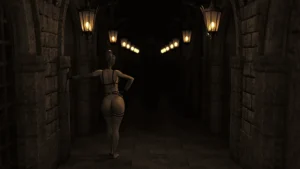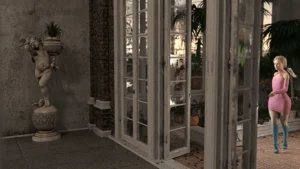
Shadows
Play Shadows
Shadows review
Explore the immersive world and gameplay of Shadows
Shadows is a captivating game that draws players into a unique interactive experience filled with intriguing mechanics and immersive storytelling. This article dives deep into Shadows, exploring its gameplay elements, narrative structure, and what makes it stand out in its genre. Whether you’re a newcomer or a returning player, this guide offers practical insights and personal reflections to enhance your understanding and enjoyment of Shadows.
Understanding Shadows: Gameplay and Mechanics
Let me tell you about the first time I truly got Shadows. I was creeping through a rain-slicked alley, convinced I was hidden, when a guard’s lantern suddenly swept across the puddles. My own elongated silhouette betrayed me, stretching right toward his feet. That was my “aha!” moment. This isn’t just a game about hiding in darkness; it’s a game about understanding how light and shadow are living, breathing elements of the world. If you’re ready to move from being a clumsy novice to a master of the gloom, you’re in the right place. Let’s pull back the curtain on the incredible Shadows game mechanics that make this experience so unique. 🙌
Core Gameplay Features
At its heart, learning how to play Shadows game is about embracing a new kind of awareness. You’re not a powerhouse; you’re a ghost. The core Shadows gameplay features revolve around light manipulation, sound propagation, and environmental interaction. I learned the hard way that sprinting across a gravel-covered roof is a fantastic way to announce your presence to every enemy below. 😅
The most genius Shadows game mechanics involve the dynamic light system. It’s not just about being in a dark patch on the map. Flickering torches, moving cloud cover, and even the light you emit from certain abilities create a constantly shifting playground. One of my most triumphant moments came when I used a single-use ability to briefly snuff out all the lights in a courtyard, creating a blanket of darkness for just long enough to slip past a patrol. The sheer panic of the guards shouting as their world went pitch black was incredibly satisfying.
To give you a clearer picture, here’s a breakdown of how these core features shape your journey:
| Gameplay Feature | How It Works | Player Impact |
|---|---|---|
| Dynamic Shadow System | Light sources are simulated in real-time, creating authentic, moving shadows based on object placement and light intensity. | Forces tactical positioning and constant awareness. Your shadow can be as dangerous as you are. |
| Acoustic Feedback | Surfaces have different sound profiles. Walking on carpet is silent, while broken glass creates a loud, localized noise. | Encourages careful movement and use of the environment to mask your sounds or create distractions. |
| Light Manipulation Tools | From throwing stones to break lanterns to using limited “Shadow Veil” abilities that dim areas. | Transforms the environment from a static backdrop into a dynamic tool you can actively shape to your advantage. |
These Shadows gameplay features are deeply interconnected. A distraction created by sound can pull a guard into a position where his own body blocks a light source, creating a new path for you. It’s a beautiful, chaotic puzzle. 🧩
Character Interaction and Progression
Your journey in Shadows isn’t about becoming a one-person army. The character progression in Shadows is a delicate dance of refining your subtle arts and understanding the world’s lore. You start as a fledgling, barely able to blend into a dim corner, but you gradually evolve into a phantom that owns the night.
The progression system is built on a foundation of “Echoes”—fragments of memory and power you collect from key story moments and hidden areas. I remember the thrill of finally unlocking the “Umbral Step,” a short-range teleport between patches of darkness. It completely changed my approach to levels, turning impassable, well-lit corridors into a series of manageable jumps. This is the beauty of character progression in Shadows; it doesn’t just make you stronger, it makes you smarter and more versatile. 🎭
Your interactions with the few NPCs in the world are crucial. They don’t just hand out quests; they offer insights, warnings, and sometimes, new tools. Building trust with a faction of fellow shadow-dwellers unlocked a vendor who sold specialized gear, like boots that further muffled my footsteps on certain surfaces. It’s a system that rewards curiosity and engagement beyond the main path.
Pro Tip for Beginners: Don’t hoard your Echoes! Invest early in movement and detection-based skills. Being able to move faster in shadows and spot enemy sightlines more easily is far more valuable in the early game than a slightly stronger attack.
Visual and Audio Design Elements
The Shadows visual design is nothing short of breathtaking. It employs a high-contrast, almost monochromatic palette where light isn’t just bright—it’s aggressive. Stepping into a well-lit area feels dangerous and exposed, while the shadows are deep, detailed, and strangely comforting. The artistry in the Shadows visual design lies in its use of color as punctuation. A rare, warm glow from a safe-room window or the eerie, unnatural magenta of a corrupted light source tells a story without a single word of dialogue. 👁️🗨️
I’ll never forget the visual of a massive, ornate cathedral, where stained-glass windows cast fragmented, colorful shadows across the floor, creating a mosaic of light I had to navigate with painstaking precision. It was a work of art I was almost afraid to traverse.
Now, let’s talk about the unsung hero: the audio design in Shadows. This is a masterclass in tension and information. The soundtrack is often minimalist, giving way to the symphony of the environment. You’ll learn to listen for the specific jingle of a guard’s keys, the change in their breathing pattern when they become suspicious, and the soft, reassuring hum that indicates a deep shadow you can hide in. The audio design in Shadows is your most reliable sense when your eyes fail you. 🎧
The creak of a floorboard under your own feet is a heart-stopping moment of feedback, teaching you to be more careful next time.
For those just starting out, here are my essential tips for Shadows game beginners:
- Embrace Failure 😅: You will be seen. You will be caught. Treat each failure as a lesson in the game’s systems. Why were you seen? Was it your shadow? A sound?
- Move Slowly 🐌: Your default walk speed is your best friend. Running is a last resort. Take your time to observe patrol patterns and light cycles.
- Listen Intently 👂: Wear headphones if you can. The audio cues are your early-warning system and your primary source of environmental information.
- Experiment with Tools 🧰: That rock or noisemaker might seem simple, but learning to use them to create distractions or even break distant light sources is a game-changer.
Understanding the intricate Shadows game mechanics and the sublime Shadows visual design and soundscape is the key to success. It’s a world that demands your patience and observation, but rewards you with an unparalleled sense of mastery and immersion. Now go on, step into the dark, and make it your own. ✨
Shadows offers a rich and engaging experience that combines compelling gameplay mechanics with immersive storytelling and design. By understanding its core features and progression system, players can fully appreciate the depth and nuances this game provides. Whether you are exploring its world for the first time or revisiting it, Shadows promises a unique journey worth diving into. Ready to explore the shadows? Start your adventure today and uncover all the secrets it holds.


























